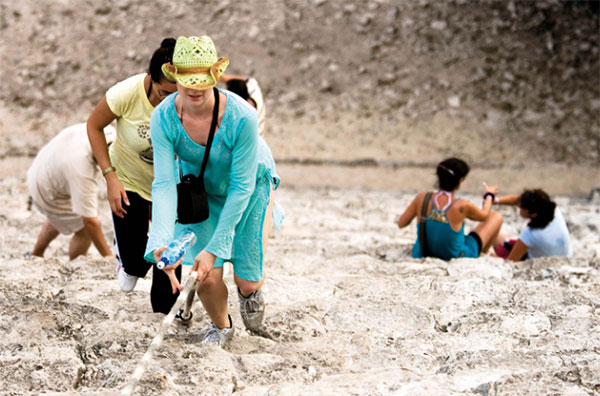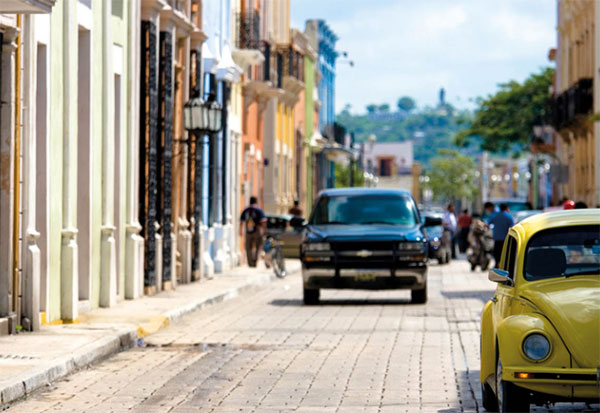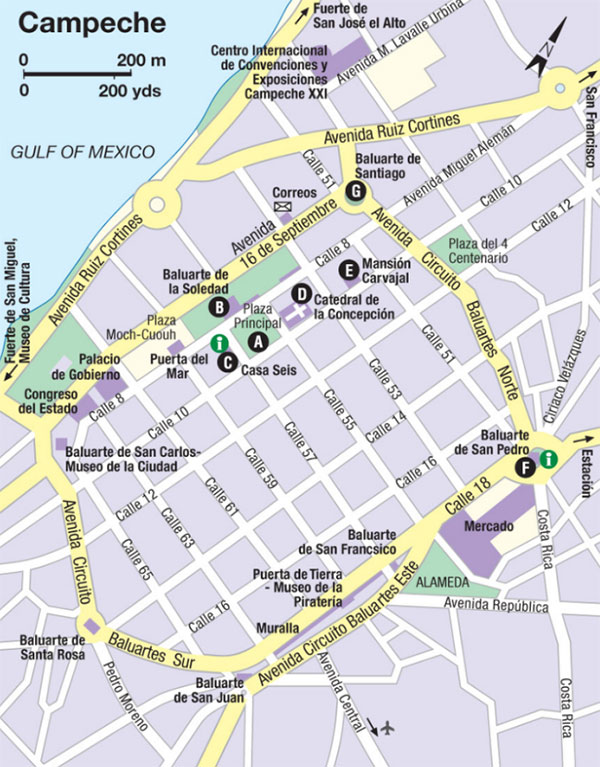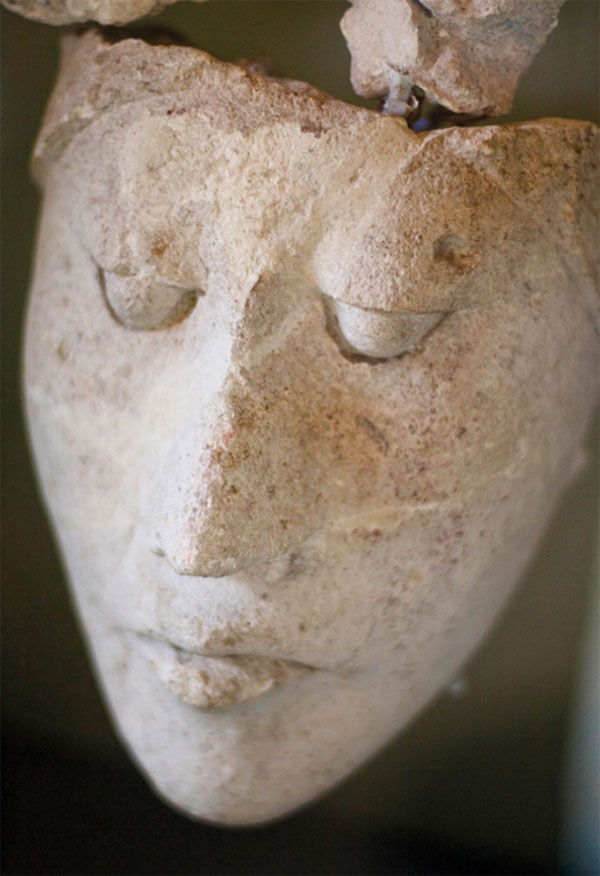A CLASSIC TRAVELOGUE
John L. Stephens, North American explorer and travel writer, and his colleague, the English artist and architect Frederick Catherwood, came to Central America in 1839, inspired by an edition they had found of Captain del Río’s expedition to Palenque in 1786. This, in Stephens’s blunt prose, had ‘roused our curiosity.’
Over the next three years, the two men traveled throughout the region, overcoming illnesses and the threats posed by ongoing civil wars. They visited dozens of Maya cities, including Chichén Itzá, Palenque, Quiriguá, and Copán, and described many places never seen before by outsiders, such as Kabah, Sayil, and Tulum. Stephens and Catherwood were captivated by these fabulous sites and were among the first to recognize that their creators had to have been the region’s Indigenous Maya inhabitants, and not some Egyptians or Greeks who had somehow wandered across the Atlantic. In 1841, Stephens published Incidents of Travel in Central America, Chiapas and Yucatán, beautifully illustrated with Catherwood’s finely detailed lithographs, and after a second trip the pair produced Incidents of Travel in Yucatán in 1843. Both are still in print today, as true travel ‘classics.’ They never did manage to decipher the glyphs, but they did bring the culture to the attention of the outside world, attracting further study that continues unabated today.
On the Highway into Campeche
Heading west into Campeche from Chetumal, Highway 186 traverses the base of the Yucatán Peninsula. This hot, humid region has been partly repopulated around the Highway, which is now an important link between central Mexico and the Riviera Maya; around 1,500 years ago, this area was one of the heartlands of ancient Maya civilization. Some of the sites, such as Xpuhil and Becán, are just off the road, while the giant city of Calakmul lies hidden in the forest far to the south.
Roads have been built to the most important sites, and much of southern Campeche state is within the Reserva de la Biosfera de Calakmul, extending north and south of the Highway, and the largest rainforest preserve in Mexico. This forest is home to monkeys, armadillos, tapirs, jaguars, and many other kinds of wild cat, so as you visit the ruins – especially Calakmul itself – you are likely to see plenty of animals as well. The preserve’s jungles merge with Guatemala’s Maya Biosphere Reserve and Belize’s Río Bravo Conservation Area to form a huge, vitally important, subtropical forest.

Climbing the Nohoch Mul pyramid at Cobá.
Alex Havret/Apa Publications
The most important site in the region is Calakmul ^ [map] (daily 8am–5pm), in the southern portion of the Calakmul Biosphere Reserve, 60km (37 miles) down a winding road that turns south off Highway 186 52km (32 miles) west of Xpuhil. At the turn-off you must pay an admission fee to the Biosphere Reserve, and there is a separate entry charge to the ruins. The way there is a lonely drive – keep a look out for flocks of wild turkeys and toucans in the treetops – and bring drinking water and insect repellent. The immense site of Calakmul is the largest known city in the Maya world, comprising over 6,000 structures, including Structures 1 and 2, vast Maya pyramids, both around 50 meters (165ft) high. The city dates back to the 5th century BC, but its prosperity really took off in the early Classic era, from AD 350.
Campeche
Traveling north 150km (93 miles) from Escárcega brings you to Campeche’s state capital. Founded in 1540 by Francisco de Montejo on the site of a Maya chiefdom called Ah Kin Pech, Campeche & [map] suffered for 200 years from attacks from pirates attracted by the wealthy galleons that set sail from here for Spain. This led the Spanish crown to encircle the city with massive fortifications, built between 1685 and 1704. Nearly 3.5 meters (8ft) thick in places, the walls were originally 2,536 meters (8,320ft) long and stretched along today’s Avenida Circuito de los Baluartes, making Campeche one of the few fortress cities in the Americas, a hexagonal stronghold guarded by eight towers. Faced with the now impregnable port, the pirates redirected their energies elsewhere.

Colorful streets in Campeche city.
Alex Havret/Apa Publications
The Puerta del Mar (Sea Gate) is a natural beginning to an exploration of the Old City. Calle 59 runs right through the Old City, a Unesco World Heritage Site from there to the Puerta de Tierra (Land Gate), which now contains an entertaining museum dedicated to pirates, the Museo de la Piratería (Mon–Sat 9am–1pm & 4-8pm).
The Plaza Principal
The hub of Old Campeche is its Plaza Principal A [map] . Baluarte de la Soledad B [map] , on the coast near the Puerta del Mar, hosts the Museo de Arquitectura Maya (daily 9.30am–5.30pm), with fine carved stelae and other relics from Maya sites around Campeche state. On the west side of the square, Casa Seis C [map] (daily 9am–9pm; free) is a 19th-century merchant’s house with lovely shaded patios that has been beautifully restored and now houses the main tourist office. On the opposite side of the plaza, the Catedral de la Concepción D [map] is topped with twin towers, flying buttresses, and a dome. Campeche’s other interesting architecture includes the 1540 church of San Francisco, some 20 minutes’ walk from the center northeast along the seafront; and the Mansión Carvajal E [map] , on calles 10 and 53, once the home of a wealthy hacienda owner, which has undulating Moorish arches, checkered floors, and a sweeping staircase.

The lively market at calles 18 and 51, where Avenida Gobernadores begins, is near the Baluarte de San Pedro F [map] , which houses a small crafts museum (daily 8am–10pm; free). Not far away, the rebuilt Baluarte de Santiago G [map] encircles the Jardín Botánico X’much Haltún (daily 9am–4pm), filled with tropical plants.
The fortress museums
Campeche’s two biggest museums occupy two dramatic Spanish forts on hills north and south of the city, built from 1779 to 1801. The Museo de Cultura Maya (Tue–Sun 8am–5pm) in the Fuerte de San Miguel, above the coastal avenue south of the city, holds one of the most important collections of Maya artifacts in Mexico, its greatest treasures the jade funeral masks discovered at Calakmul in the 1990s (although these are often on loan to other museums).The best way to get to the museum is by taxi, but a special tourist bus called ‘El Guapo’ runs from the Plaza Principal.

The Fuerte de San Miguel Museum in Campeche is home to many important Mayan artifacts.
Alex Havret/Apa Publications
One of Campeche’s main attractions, the Fuerte de San José el Alto, north of the city, is equally imposing on its massive hill, but the museum it contains, the Museo de Barcos y Armas (Tue–Sun 8am–8pm) is less exciting, with exhibits on colonial and maritime history. A tourist bus runs there a few times each day.
Chiapas
Leaving the Yucatán Peninsula proper, the state of Chiapas to the south provides an adventurous extension to many visitors’ itineraries, to explore some fascinating Maya settlements and ancient ruins deep in the forest.
Palenque
Looming out of the dense tropical undergrowth of Chiapas, 355km (220 miles) from Campeche, the Maya ruins at Palenque * [map] (daily 8am–5pm) are for many visitors the highlight of their trip to Mexico. The complex site inspires awe, and yet what one sees today represents just a fraction of the incredible complex of chambers, terraces, staircases, temples, palaces, and other structures that graced Palenque at its peak in the 7th century AD.